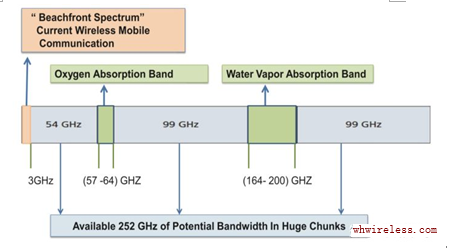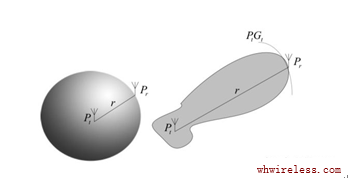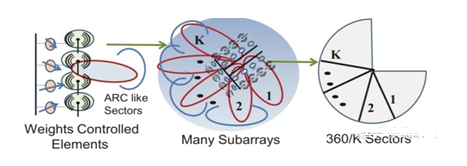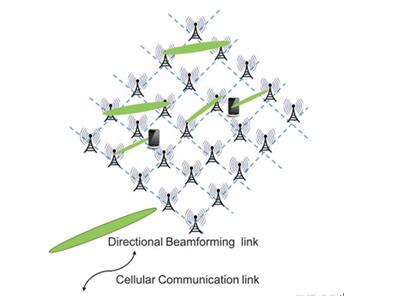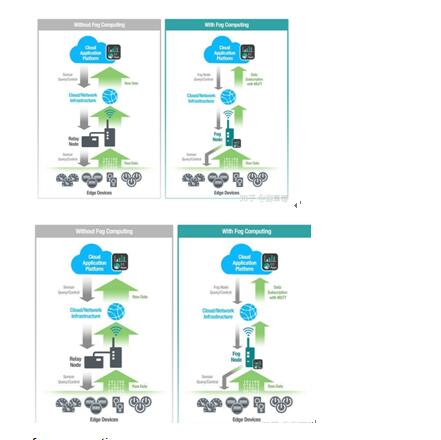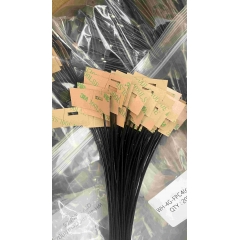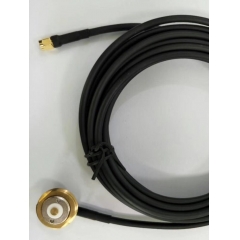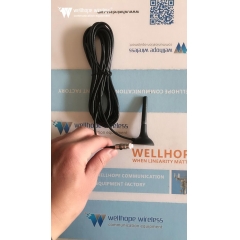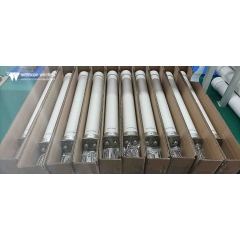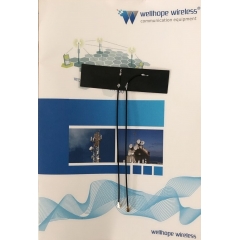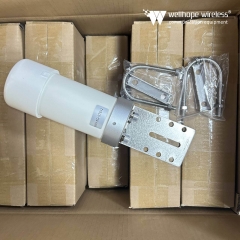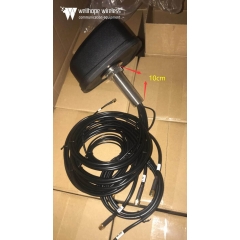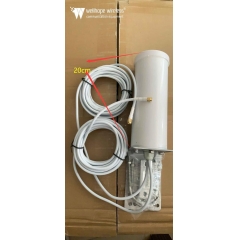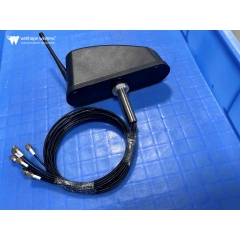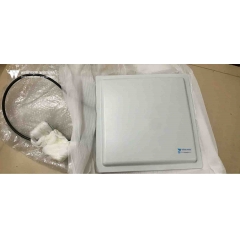From a professional point of view, what is the reason why5Gis faster than4Gnetwork?
In fact, it is not "5Gis faster than4G", but "5Gis proposed to be faster than4G". Every generation of wireless communication after3Gwill put forward the target first, and then consider the system design and technology selection.
Millimeter Wave (Upgraded Bandwidth)
Advanced Beam Shaping (Enhanced Signal-to-Noise Ratio)
Ultra-large antenna, full-duplex wireless (enhanced bandwidth and signal-to-noise ratio, spatial domain).
Millimeter wave
The 300MHz-3GHz spectrum used in 1-4 generation wireless communication has the advantages of good penetration and wide coverage, but there is an important disadvantage: the bandwidth is too narrow!! There are too many wireless devices in this band!! The spectrum is almost finished.
There is no negative spectrum, so in order to transmit large capacity and high speed data, only to find the available spectrum above 3GHz.
Let's look up. That's the millimeter wave band (3GHz-300GHz). There are two special parts in the millimeter wave spectrum, the oxygen absorption band (57-64 GHz) and the steam absorption band (164 GHz-200 GHz), which can not be used for communication, so there are 252 GHz bandwidth available in the millimeter wave band (it should be emphasized here that all the 1-4 generations of commercial communications are crowded in the spectrum below 3 GHz).
Of course, in fact,5Gcan not use so many bands. In the millimeter wave spectrum division of various countries, the width of the millimeter wave band allocated to5Gis about 3-6 GHz, which is enough to increase the data transmission rate by about 10 times.
However, it should be emphasized that the5Gstandard needs three bands. The millimeter-wave band is mainly responsible for high-speed data transmission. At present, the millimeter-wave standard has not been determined. Although millimeter wave has been used in radar, aerospace and military communications, there are still many challenges in civil communications. This is also the current very hot research direction of wireless communication, in this reply will not be introduced in depth.
More advanced beam shaping
The base station antenna in4Gis a combination of directional antenna and omnidirectional antenna (thank you for the comment area reminder). In5G, due to the narrow coverage of millimeter wave, large path loss and severe weather impact, it is necessary to focus the transmitting energy through beam design, so as to enhance the received signal energy, enhance the signal-to-noise ratio (recall the channel capacity formula here), and coverage.
Directional beams after beamforming can help improve the coverage of base stations. Moreover, base station energy will be more efficient.
In fact, beamforming in5Gis more difficult because it involves Massive MIMO and millimeter-wave narrow-beam user tracking, inter-cell beam switching scheduling and base station LOS and NLOS problems, which is also a great direction of wireless communication research. Nowadays, many academics are considering partitioning the base station coverage to help multi-antenna beam switching.
Sectorized Antenna
Massive MIMO
In order to improve spatial diversity/multiplexing gain, multi-antenna systems in wireless communications need to weigh each antenna. In reality, the algorithm is non-linear and computationally complex, and the more antennas the more complex.
But surprisingly, when the number of antennas is very high, simple linear precoding can approach the optimal results very well. So Massive MIMO has attracted a lot of attention since it was proposed.
Massive MIMO test bed
The Massive MIMO in 5G may have a lot of applications, not just large stations. Small millimeter wave transmitters may also be equipped with Massive MIMO systems, because millimeter wave antennas are narrow in beam and short in antenna length, which is more suitable for Massive MIMO applications.
Back to the topic, the advantage of Massive MIMO is to maximize the use of space resources. It can provide multiple beamforming services to cell users at the same time, and improve the signal-to-noise ratio of users at the same time, so as to improve the data transmission rate. However, channel estimation is always a difficult problem in Massive MIMO precoding.
Full Duplex Radio
All existing wireless transmitters are half-duplex. Half-duplex means that they cannot receive signals while sending them - otherwise they will interfere with themselves. (After all, it's not human. It's not clear what you say for the time being....
Full duplex radio transmits and receives signals at the same time, so that the data transmission rate X2 can be achieved. Of course, the cost is the self-interference (red arc) problem in the graph. Even when there are too many users, the interference between users will also X2. The core network design in5Gis based on C-RAN, which means that self-interference can be reduced by centralized scheduling, while isolation between transceivers can be achieved by directional antenna, beam shaping, absorptive shielding and cross-polarization.
In this way, full duplex radio can be used in5G.
This is the development of physical layer technology in5G, and how to use it together, that is, how to achieve "fast transmission speed".
Low transmission delay
The delay we are talking about here is round-trip latency, which may be understood as the total time required for data to and from the access network and the core network. Because the transmission speed of radio is relatively fixed, it can not be compressed, so there are two ways to reduce: reducing signaling loss and compressing network processing.
The way to reduce signaling loss is to minimize unnecessary signaling, such as
Reducing channel estimation time through full duplex technology,
Because millimeter wave has very little expansion, it can reduce the CP prefix of OFDM signal and compress the OFDM frame length.
Millimeter-wave base stations are designed by gridding to reduce interference and delay
Compressing Network Processing,
Compressing network processing, image understanding is to flatten the company level and decentralize decision-making power. In this way, fewer "reporting up" times will significantly reduce the unnecessary overhead in the network. This was also mentioned by other respondents.
The standard way to compress the core network is "without unnecessary processing units", in other words, the separation of control structure and data transmission structure. Of course, there are many other solutions.
A better idea of compressing network structure is that the "fog computing" fog calculation, which is very popular in academic circles, is to devolve some repetitive calculations and use the wireless access terminal (base station, etc.) to do the calculation and processing unit, so that it can be regarded as an alternative "computing delay", which greatly reduces the network delay.
The other is very orthodox, but also very hot research direction, "wireless caching" wireless caching, this idea is to cache content to reduce transmission delay.
Fog computing
These are some of the delays in5G, mainly in the MAC layer technology, about how to effectively schedule resources, how to reduce the delay.
There are many other different indicators in5G, such as "reducing energy consumption", "improving user service quality", "improving cell capacity". This is a very big topic in every sentence. There are many research institutes behind it, and many universities have done great work. Many people are studying in every small area, but I am not a child because it has nothing to do with the problem. Detailed introduction.
Therefore, you can also see that5Gis the result of the joint operation of the communication industry and academia. Standard organizations (industry) propose indicators, select appropriate technology and guide the direction of technology, research institutions and universities propose solutions, and improve the technical route (of course, the time sequence is not necessarily the same). If there are flaws in the solution, then the academia will continue to improve, and ultimately achieve performance indicators.
Industry and academia work together to achieve a complete5G.


















 5G network antenna
5G network antenna
